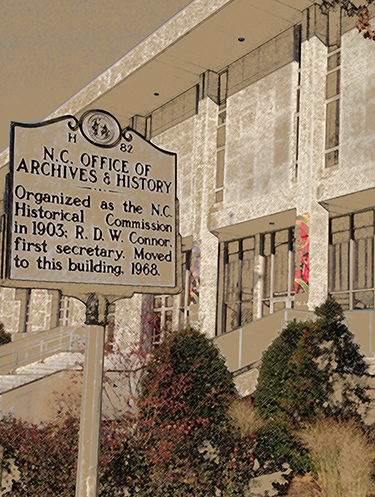North Carolina was affected by several hurricanes in the mid-1950s, chiefly Hurricane
Hazel (1954) and Hurricanes Connie, Diane and Ione (1955). While the Outer Banks were
not affected by the these hurricanes as much as southern portions of the state, a
series of nor'easters in the winter and early spring of 1956 caused shoreline erosion
and damage to homes and businesses.
With dunes leveled and only a thin beach remaining, the Nags Head Chamber of Commerce
called a public meeting at the Arlington Hotel, April 12, 1956, at which a committee
was formed and "charged with the specific responsibility of determining whether damage
from recent storms had been successfully severe enough to justify requesting Governor
Luther Hodges to designate this as a Major Disaster Area." The seven member committee
included T. H. Briggs, George Crocker, Robert Gunn, H.C. Lawrence, Lucille Purser,
Lawrence Swain and David Stick.
Stick was the author of
Graveyard of the Atlantic, Shipwrecks of the North Carolina Coast (UNC Press, 1952), and was, at that time, working on a new book,
The Outer Banks of North Carolina, 1584-1958, for which had begun to research storms and erosion in the area. Stick was made chairman
of the committee that quickly issued a report urging that Governor Hodges be asked
to declare the Northern Dare beaches a disaster area.
The Dare County Board of Commissioners then appointed a permanent Dare County Storm
Rehabilitation Committee made up of the members of the ad hoc Chamber of Commerce
committee as well as seven others.
In May, 1956, David Stick wrote and organized the booklet
Handbook for Erosion Control: What the Individual Property Owner can do to Protect
his Beachfront, that was published the following month by the committee, followed by
Presenting the Need for Hurricane Protection for the Outer Banks of North Carolina.
